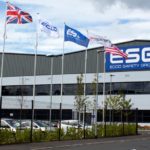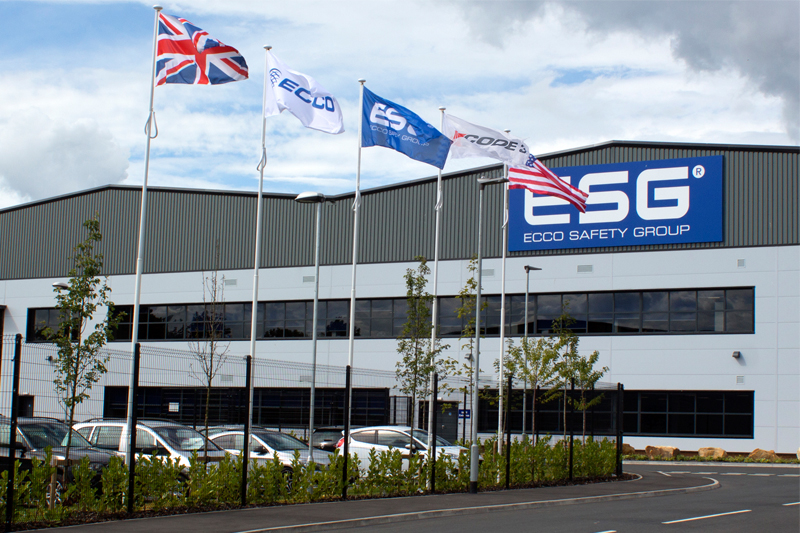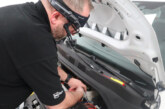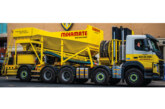CVW was recently invited on a tour of ECCO Safety Group’s (ESG) EMEA headquarters in Leeds. The previous 18 months had been a period of dramatic development for the vehicle safety solutions specialist and the visit provided the ideal opportunity to understand just what had been going on.
Prior to 2018, ESG was playing the role of the quiet overseer. It had worked hard to acquire a number of different brands, all in either the vehicle safety solutions or emergency systems sectors. Many of these chosen brands were, and to some extent still are, household names in the UK – brands such as Britax and Premier Hazard being prime examples – so it was an astute move to bring these under the ESG umbrella. Understandably, this was a gradual process over the course of a 20-year time frame, and was only the start of a much larger plan.
The second stage, and perhaps the more challenging, was to consolidate this collection of brands under the ESG banner under either the ECCO brand or Code 3, where the former focuses on vehicle safety solutions and the latter – the rebrand of Premier Hazard – on emergency systems. The challenge was to not only make the end user aware of the shift, but to also bring the brands under one roof and mesh what are effectively different companies – some of whom were competitors – into a synergised production facility that feeds into the
entirety of the UK. No small undertaking.
The scale of the operation is immediately obvious when you arrive at the company’s headquarters. Only recently completed, the new 8,975ft2 building houses everything from product design, engineering and marketing, to packaging and dispatch. Yet, the scale of the facility feels appropriate when you consider the number of brands it has to cater for. Although the Leeds site is the base of operations for the ECCO brand, it is worth remembering that this is actually a culmination of Britax, Vision Alert, Preco, PSE Amber and Delta Design brands, so streamlining all this into one operation did not happen without overcoming some hurdles.
After a tour of the warehouse, there was the opportunity to talk to Enrico Vasallo, Managing Director of ESG EMEA. Of course, the first question was to find out how the changes had affected the company, to which Enrico replied, “I have to admit, there were a few teething problems when we first started in the new setup. It took time to adjust, not only on a practical level, but also at an employee level. You don’t realise how firmly each company’s ethos is ingrained in their employees’ mentality until they’re introduced into a different environment.
“For that reason, when everything was changing, there were problems with achieving the delivery and service standards we expected of ESG, which left some customers a little disappointed. However, this is no longer the case. It now only takes a maximum of five days for a bespoke, bulk order to reach the customer; a lead time that few of our competitors can match. Having the production line up and running was the first step towards ESG’s goal, and now it becomes a question of securing the two brands’ – ECCO and Code 3 – presence in the market.”

Given the initial effect the transition had on the company’s processes, the following question probed into the reasoning behind making the change in the first place. Enrico explained, “ESG has global ambitions. Even now we have facilities in six different countries, but implementing a concise and streamlined approach to growth when you are operating under multiple brands is incredibly complex. Instead, it made sense to present a united front, pooling our resources into two new brands, one for safety solutions and the other for emergency systems, and then grow from there.”
However, reinventing a brand is all well and good, but to succeed, a company has to have products that are well respected in the market. Realistically, this has to come from a heritage of precise engineering and quality assurance processes. Dan Gray, Test Engineering Team Lead, provided a whistle-stop tour around ESG’s testing and engineering department. He explained, “Every product design, from light beacon to reversing alarm, has to go through a sequence of rigorous tests to make sure they can cope with all kinds of conditions. We have machines that test against rain, humidity, water ingress, dust ingress and temperature extremes. To add to this, we have also recently invested in a ‘real-world’ temperature vault that simulates extreme ‘real-world’ changes in temperatures, in real time. Perhaps not wholly necessary for the products destined to stay on UK shores, but when you consider that ESG is a global supplier, this level of testing is essential.
“For our lighting range, there is a specialised dark room to make sure specifications are met. In fact, all compliance testing on these lights is aligned to specifications that exceed the standard R65 and R10 requirements – a policy that we think establishes the ESG product line as one of the best in the market. We do not cut corners at ESG.” And Dan’s closing remark is certainly
true. Yes, it may have taken some time for the company to consolidate its offering, and it may yet take more. However, when touring the Leeds facility, it becomes apparent that this move has been carefully formulated, and provides undeniable evidence that ESG has all the ingredients to make this brand reshuffle a success.










